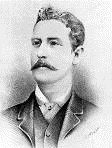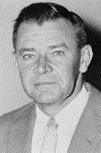Key People
QJA’s first President was former Mayor of Brisbane and Official Chief Magistrate, Ald John W Hetherington who held the position for just the first year.

The Presidents to follow Hetherington during the first decade were W E Moxon, A L Petrie, E Griffith Oxley, F W Sabine and S M Newman, each of whom served for two years.
While holding the office of QJA President in 1921 and 1922, Andrew Lang Petrie (a member of one of the most prominent pioneer families of Brisbane) was also a Member of the Legislative Assembly (MLA). Mr Petrie held the seat of Toombul/Hamilton for 32 years (1893-1925). He died in 1928.

The initial QJA Patron was the sometimes controversial Sir Pope Alexander Cooper, Queensland Chief Justice (1903-1922), University of Queensland Chancellor (1915-1922) and intermittent Lieutenant-Governor.

In 1924, a nineteen year old Thomas Alfred Hiley replaced the inaugural QJA Registrar, S R F Allom (who held the position for the first six years). Mr Hiley would remain in the Registrar’s chair for the next twenty- two years (finishing in 1945).
In April 1944, Hiley was elected to the Legislative Assembly as the member for Logan. He was later to represent Coorparoo (1950-60) and Chatsworth (1960-66) and become leader of the Liberal Party. In 1957 the Country Party-Liberal Party coalition took office, with Frank Nicklin as Premier and Hiley as State Treasurer, a portfolio he held until stepping down in 1965. He was knighted in 1966.
